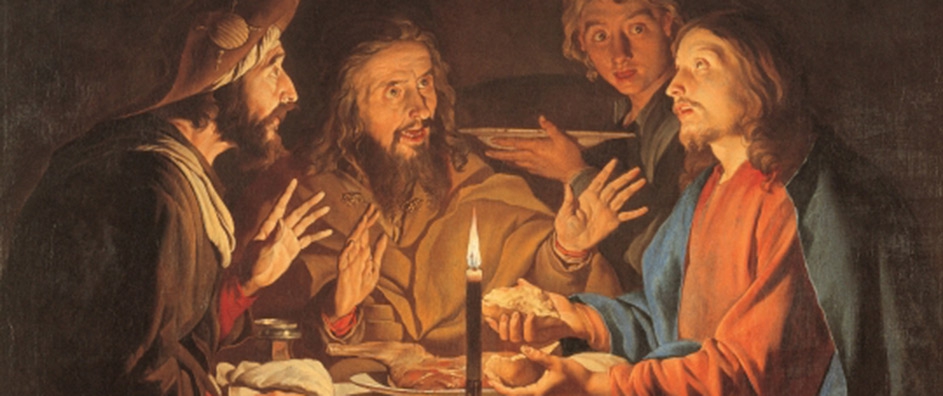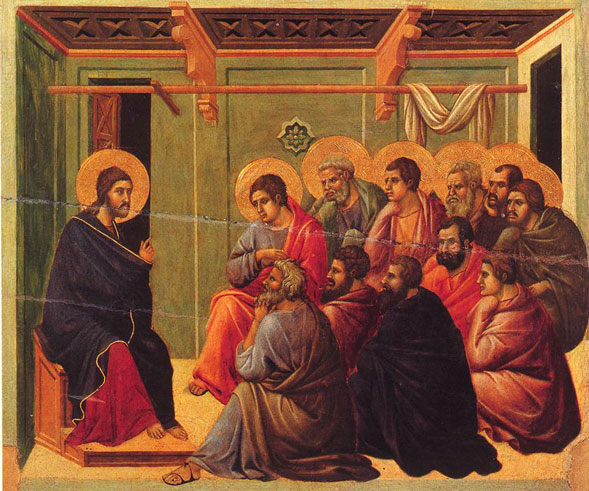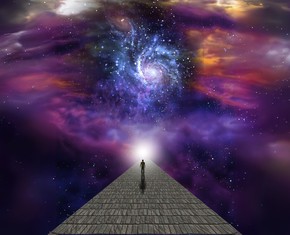The views expressed in our content reflect individual perspectives and do not represent the authoritative views of the Baha'i Faith.
…Thou hast written concerning the meeting of His Highness Christ after the crucifixion and that some of the apostles perceived Him but did not recognize Him; but that they did recognize Him after the breaking of bread.
Know thou that the Messianic Spirit and the outpouring of the Holy Spirit is always manifest, but capacity and ability (to receive it) is more in some and less in others. After the crucifixion the apostles had not in the beginning the capacity and ability of witnessing the Messianic reality. For they were agitated. But when they found firmness and steadfastness, their inner sight became opened, and they saw the reality of the Messiah as manifest. For the body of Christ was crucified and vanished, but the Spirit of Christ is always pouring upon the contingent world, and is manifest before the insight of the people of assurance. – Abdu’l-Baha, Tablets of Abdu’l-Baha, Vol. 1, pp. 193-194.
John’s account of Christ’s resurrection , quite similar to Luke’s except that it increases the frequency of events, also adds some interesting dialogue. He has Mary of Magdala see Jesus outside the tomb, but initially not recognize him. Later, when she realizes Jesus, she is told (Jn 20:17): “Touch me not for I am not yet ascended unto the Father.” Taken at face value, the meaning is that Jesus did not die on the cross. A rather complex, speculative theory has evolved among Christian theologians to explain how Jesus could die but not yet be ascended to the Father. But perhaps John was trying to emphasize that we should not cling to the physical body of Jesus — that the spiritual body is more important.
John records two instances of Jesus coming and standing among the disciples, and specifically mentions that both times the disciples were behind locked doors. The first time the disciple Thomas was not present, and he refused to believe unless he could put his fingers into the print of the nails on Jesus’ flesh. When Jesus appeared the second time behind locked doors, Thomas’ request was granted and Jesus stated: “because thou hast seen me, thou hast believed: blessed are they that have not seen, and yet have believed” (Jn 20:29). Some take this account as a confirmation of a literal resurrection. Others take it as a statement that Thomas could believe in a spiritually risen Jesus because he knew Jesus during his ministry, i.e. before the crucifixion.
The accounts of Jesus appearing to others after the verses above come from later additions to the gospel, not written by the original authors.
As you can see after viewing each of the four the gospels fairly, and comparing them chronologically, it seems that each gospel contains both literal and allegorical interpretations as possibilities. Consequently, neither side in the literal vs. symbolic debate has ever been able to demonstrate conclusively that they are right in their interpretation.
But we know that men made of flesh do not suddenly materialize and dematerialize behind locked doors, except on Star Trek. They do not suddenly vanish, jump from place to place, remain unrecognized by those that know and follow them, and fail to compel dialogue from their associates. On the other hand, you cannot feel the nail prints of spirits. Either the spirit was flesh, or the feeling was a product of mental reflection. What then happened?
It seems obvious, when all the stories and their perspectives are weighed rationally, that the gospel writers merely incorporated the sometimes sketchy stories of a resurrection experience into their differing accounts. As physical accounts of a resurrection, the writers were surely aware that the tales were not very credible. However, the writers must also have known that many were willing to relay and believe such accounts. If recording these stories helped the young faith of Christians, what harm could there be? When examined dispassionately, however, the weight of the evidence must fall with a nonliteral interpretation. This conclusion mirrors the Baha’i teachings, which focus firmly on the allegorical and the symbolic as the chief purpose of such accounts:
…the meaning of Christ’s resurrection is as follows: the disciples were troubled and agitated after the martyrdom of Christ. The Reality of Christ, which signifies His teachings, His bounties, His perfections and His spiritual power, was hidden and concealed for two or three days after His martyrdom, and was not resplendent and manifest. No, rather it was lost, for the believers were few in number and were troubled and agitated. The Cause of Christ was like a lifeless body; and after three days the disciples became assured and steadfast, and began to serve the Cause of Christ, and resolved to spread the divine teachings, putting His counsels into practice, and arising to serve Him, the Reality of Christ became resplendent and His bounty appeared; His religion found life; His teachings and His admonitions became evident and visible. In other words, the Cause of Christ was like a lifeless body until the life and the bounty of the Holy Spirit surrounded it.
Such is the meaning of the resurrection of Christ, and this was a true resurrection. But as the clergy have neither understood the meaning of the Gospels nor comprehended the symbols, therefore, it has been said that religion is in contradiction to science, and science in opposition to religion, as, for example, this subject of the ascension of Christ with an elemental body to the visible heaven is contrary to the science of mathematics. But when the truth of this subject becomes clear, and the symbol is explained, science in no way contradicts it; but, on the contrary, science and the intelligence affirm it. – Abdu’l-Baha, Some Answered Questions, pp. 104-105.

















Comments
Sign in or create an account
Continue with Googleor